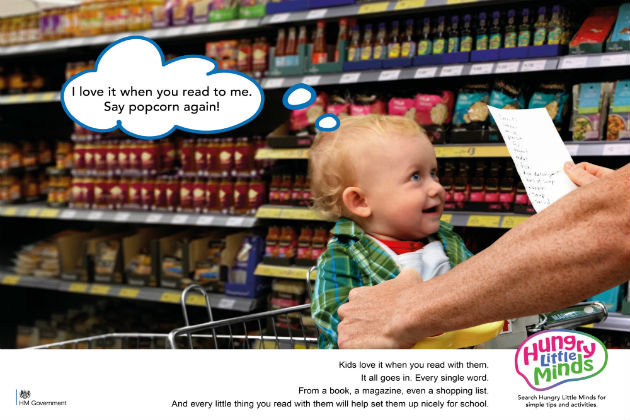Lessons learnt from Hungry Little Minds
In July 2019, our team launched Hungry Little Minds, a three-year national behaviour-change campaign by the Department for Education. It prompts parents to support children’s learning through playing, chatting and reading, based on evidence that early language ability shapes later outcomes. As the first government campaign encouraging parental behaviour change in the home learning environment, we knew that “nudge” wasn’t enough: we had to leverage stakeholders’ expertise to achieve a shared goal.

From this project, we took away 4 key lessons for how government engages stakeholders:
Evidence brings stakeholders together
Starting the journey with a shared evidence base was vital in getting 20+ stakeholders aligned.
As a user-centred campaign, our priority was to deliver consistent and evidence-based messages to families. Improving the home learning environment relies on changing parents’ behaviours through society-wide change, with parents and families hearing about the campaign from brands, business, through local services and hopefully each other.
By building the behaviour change model with a range of organisations in the sector, we ensured that the audience was exposed to consistent messages and that the sector’s best expertise was united behind the policy.
Stakeholders are the experts
Using stakeholders’ expertise unlocked new opportunities and stopped us from re-inventing the wheel. Voluntary and community sector stakeholders such as the National Literacy Trust, generously shared their knowledge and plugged us into their extensive networks.
We have been delighted with how widely stakeholders have helped us to spread the message beyond our immediate contacts, once we empowered them with the right tools (see our Hungry Little Minds toolkit – PDF, 1.6MB, 12 pages).
Build-in stakeholder moments throughout the journey
In the throes of delivery, we worked hard to continue engaging stakeholders, which has helped to ensure our alignment and prevent mission creep.
Once the behaviour change model had been established, we built in the communications elements. We shared early creative ideas with stakeholders to gather their opinions, which in turn built trust.
Stakeholder relations develop along the way
After building the evidence base with the voluntary sector, our stakeholders have evolved as we concentrate on the communications campaign. Our focus is now spreading the message as widely as possible, especially in hard-to-reach areas.
Our partners, both commercial and public sector, are experts in engaging their customers, clients and users, which is crucial as we work towards embedding learning opportunities in the local community. With support from these key partners, day-to-day places such as the shoe shop and the library are becoming engagement opportunities with parents.
